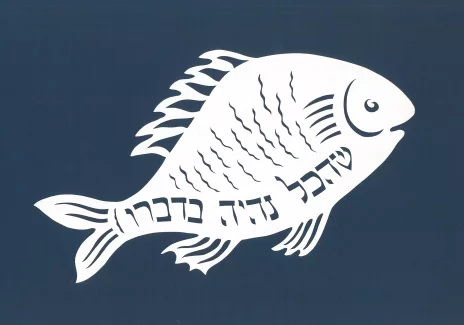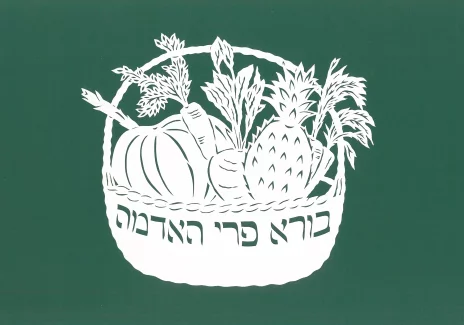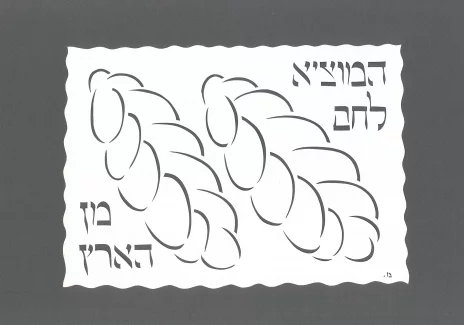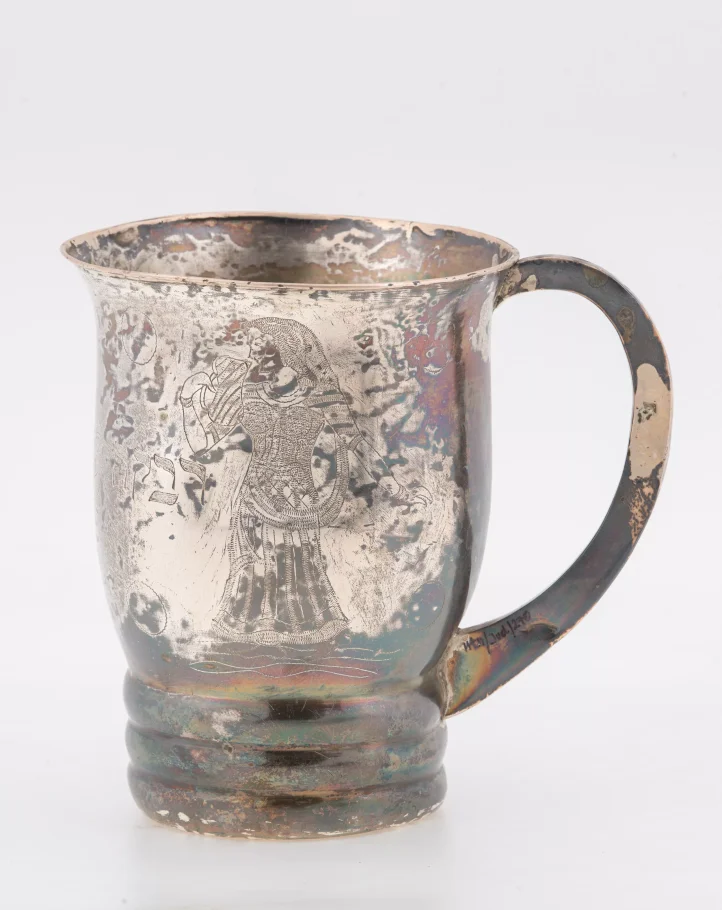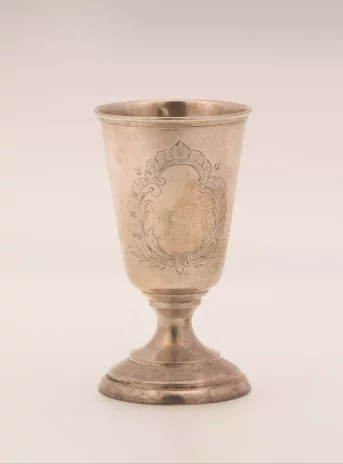Blessings
Judaism recommends that all goods enjoyed by men should be regarded as gifts for which they should extend their thanks to God. In Jewish religious law this took the form of blessings - short prayers of thanksgiving recited in many different situations in life, including before every meal. The commandment to bless food is included in the Torah: “When thou hast eaten and art full, then thou shalt bless the Lord thy God for good land which he hath given thee.”
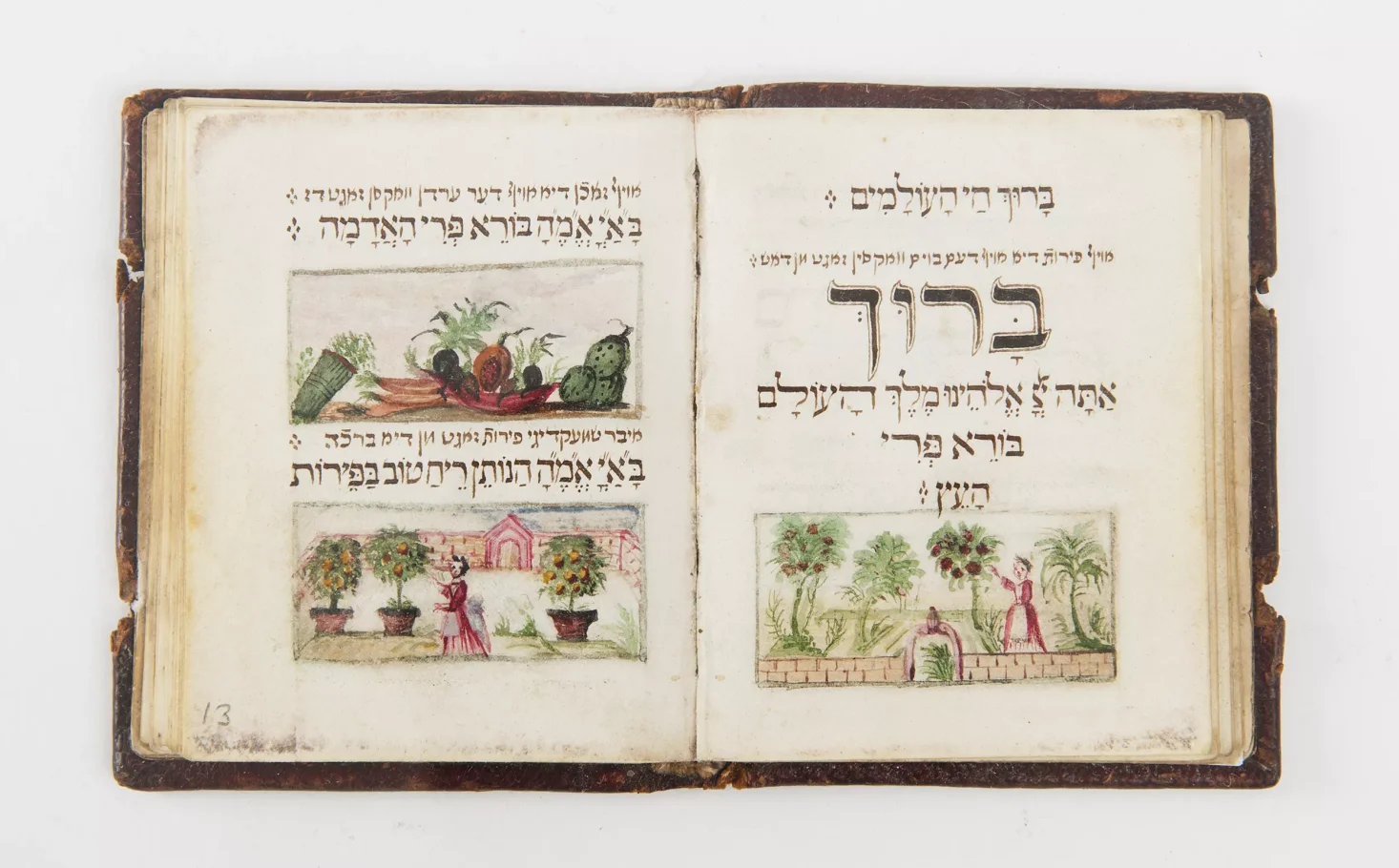
Blessings recited over above-ground vegetables and fruits
Illustrations in a manuscript containing daily blessings and prayers. Moravia, Habsburg Empire, 1726/1727.
The Israel Museum, Jerusalem
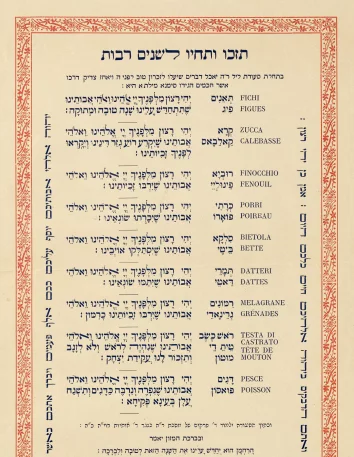
Blessings of food consumed on the Rosh Hashanah holiday
Printed card to be hung in the kitchen. Italy, 1850.
Gross Family Collection, Tel Aviv
Blessing of the food
Blessings (hebr. "brakhot") recited over meals are an expression of acknowledgement that the world is God’s creation, and of our gratitude for it. Each type of food requires a slightly different prayer, but the core of these blessings goes: “Blessed art Thou, Lord our God, Ruler of the Universe, who creates…" (followed by the name of food one is about to consume).
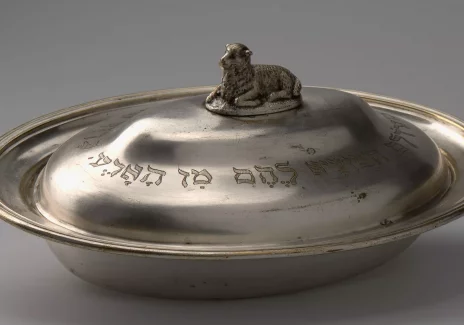
A platter with a cover with Hebrew inscription of the blessing over bread
The Blessing reads: "Barukh atah, adonai, Eloheinu melekh ha’olam, hamotzi lekhem min ha’aretz" (Blessed areYou, Adonaiour God, Sovereign of all, who brings forth bread from the earth). Poland, Hennenberg Brothers Plater Factory, Warsaw, 1939.
POLIN Museum of the History of Polish Jews
View 3D
Hand washing
Washing hands (hebr. "netilat yadayim") is performed before consuming meals containing bread or matzo, and precedes blessing the food. Having washed the hands, a religious Jew recites the following prayer: “Blessed areYou, Adonaiour God, Sovereign of all, who has sanctified us with divine commandments, and commanded us concering the washing of hands.”
Kiddush
Kiddush (hebr., "sanctification") is a special prayer recited over a glass of wine which is a form of sanctifying Shabbat, a holy day or any celebration such as circumsicion or a wedding. In case a person does not consume alcohol, wine can be replaced by grape juice.
Kosher wine
Since ancient times, Jews have taken special care to keep wine kosher. No wine intended for pagan or Christian worship was allowed—even wine that had been touched by a non-Jew was considered treif. Kosher wine is still produced under rabbinical supervision, and only religious and specially trained Jews are allowed to touch the tools used in its production. A special kind of wine is made for Passover—it must not come into contact with flour or cereal seeds.
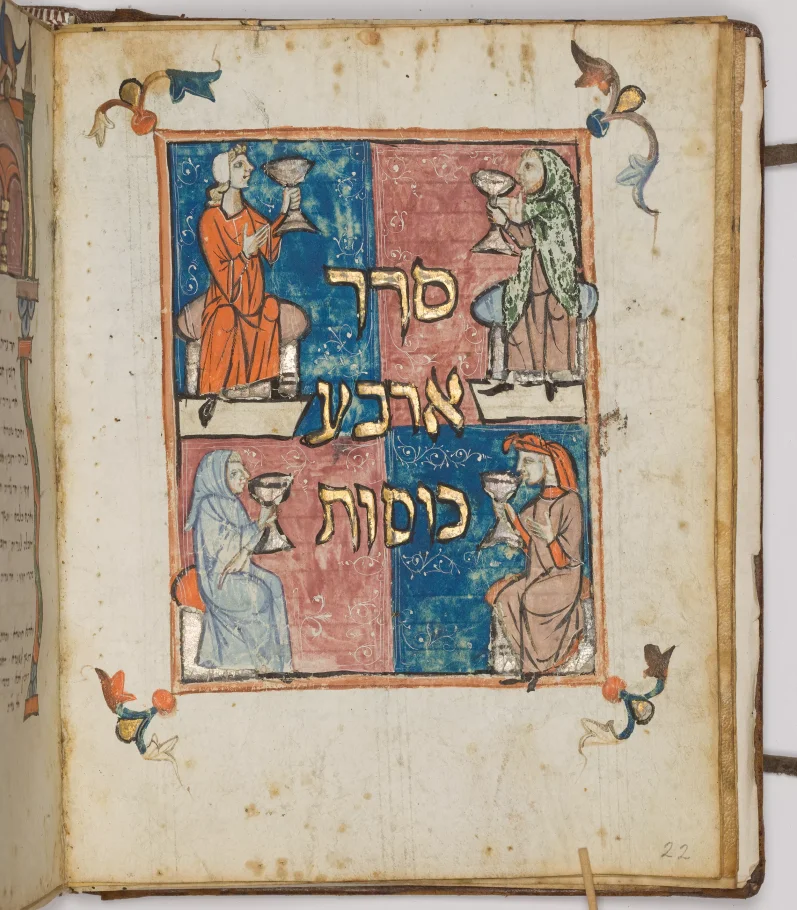
Drinking four cups of wine during a Passover meal
Illustration in the so-called "Sassoon Haggadah" produced in Spain or southern France, c. 1320.
The Israel Museum, Jerusalem

SCROLL or CLICK&HOLD
to go on
